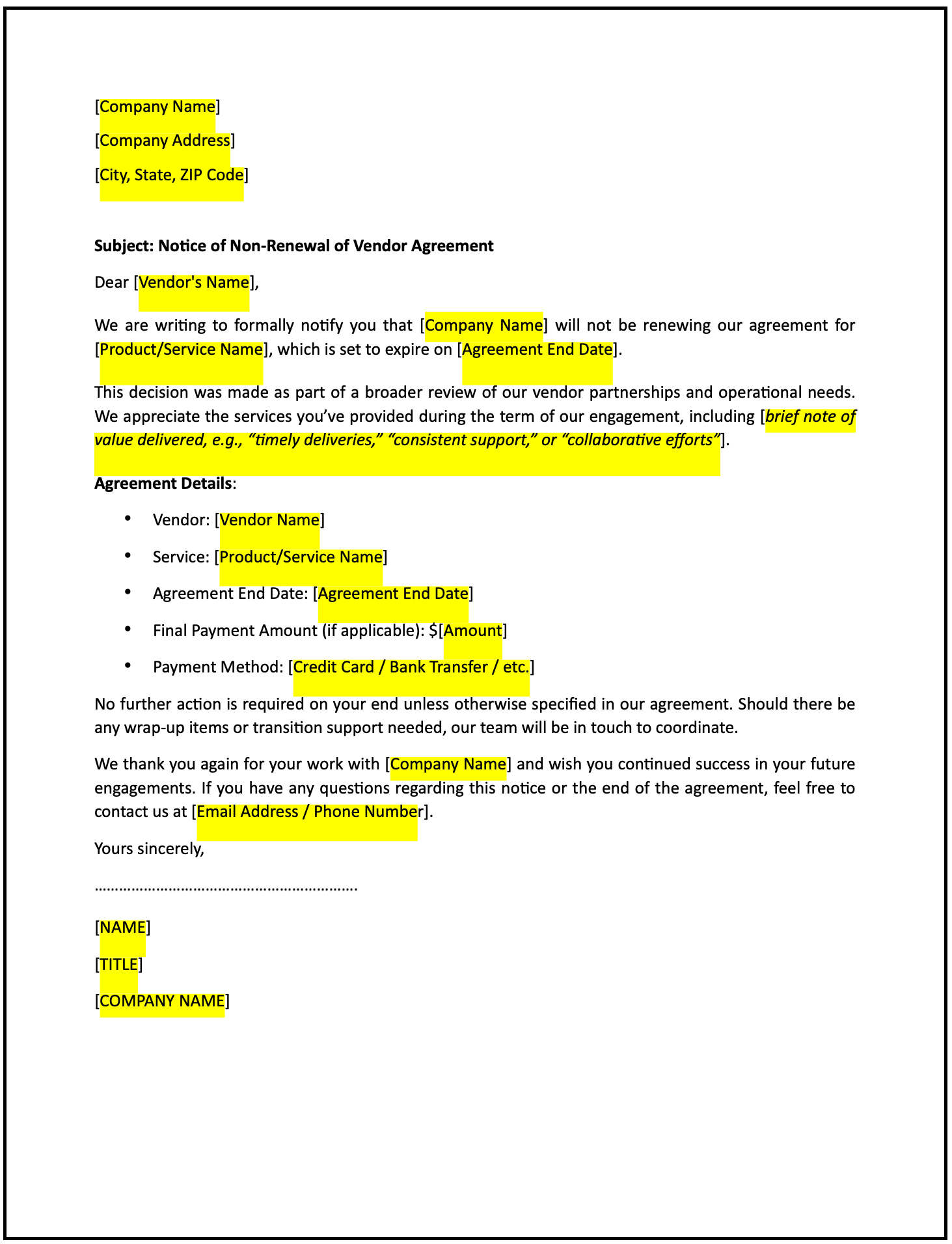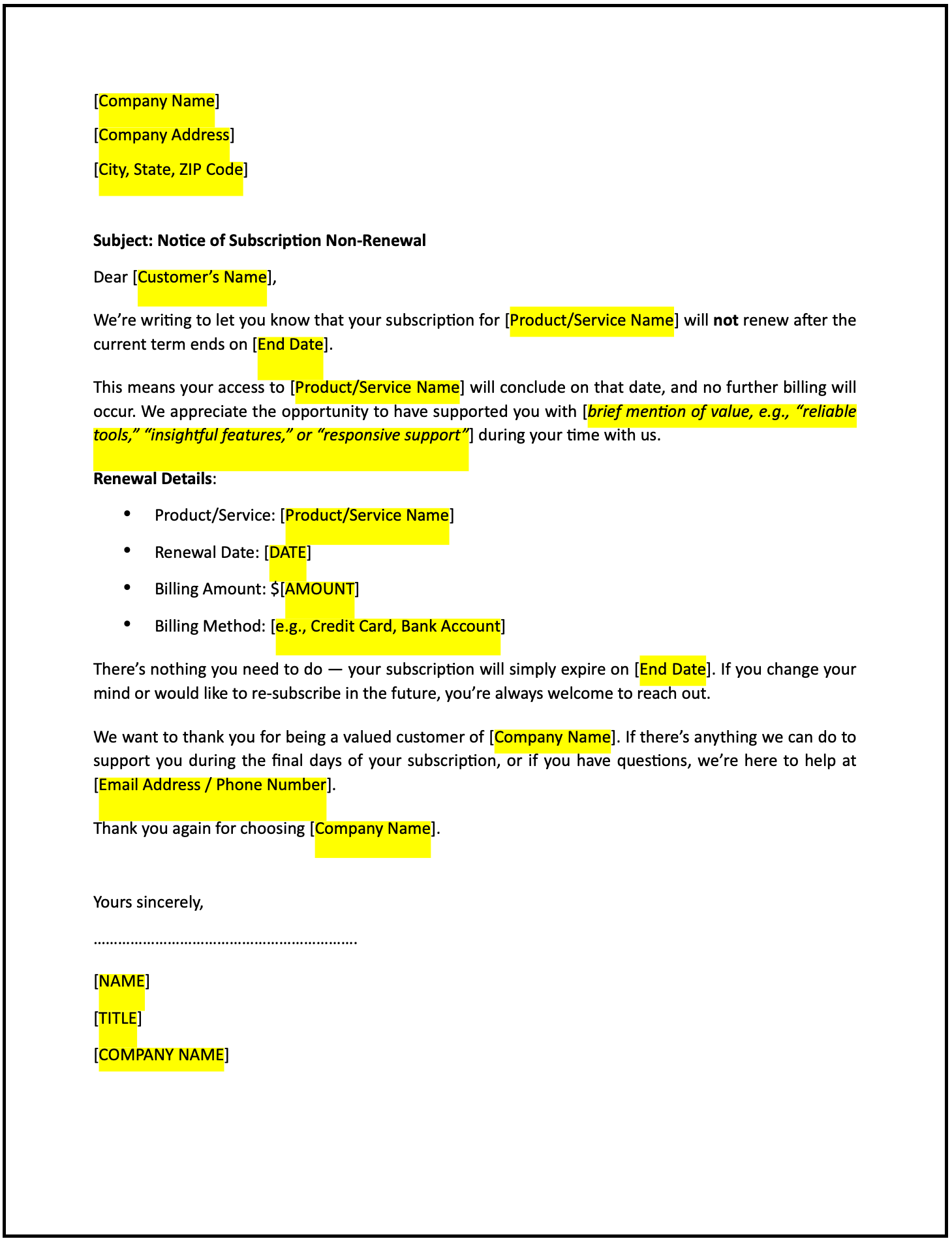Proposal for alternative ways to meet compliance letter: Free template

Proposal for alternative ways to meet compliance letter
Sometimes, meeting compliance requirements calls for flexibility and practical solutions tailored to operational needs. This letter is designed to professionally propose alternative methods to meet compliance while staying aligned with regulatory expectations. It clearly outlines the situation, the proposed alternatives, and the benefits, ensuring all stakeholders are informed and involved in the decision-making process.
How to use this proposal for alternative ways to meet compliance letter
- Identify the compliance requirement: Clearly describe the regulation or standard in question and the specific requirement your proposal seeks to address.
- Customize the template: Replace placeholders with your organization’s details, the compliance need, and the proposed alternative solutions. Use straightforward language to explain the situation.
- Explain the reason for alternatives: Provide a clear explanation of why the original method may not be feasible, such as operational challenges, budget constraints, or resource limitations.
- Outline the proposed solution: Clearly state the alternative methods, explaining how they still meet the compliance objectives. Include details like processes, tools, or timelines if applicable.
- Highlight benefits and safeguards: Emphasize how the alternatives achieve compliance, minimize risks, and provide practical benefits for all parties involved.
- Use a collaborative tone: Frame the letter as part of an open dialogue, inviting feedback or suggestions from stakeholders.
Benefits of using a proposal for alternative ways to meet compliance letter
This letter template is a professional and transparent way to suggest alternative compliance methods. Here’s how it helps:
- Encourage collaboration: This letter opens a dialogue with stakeholders, fostering mutual understanding and support for practical solutions.
- Promote transparency: Explaining the need for alternatives and the proposed solutions builds trust and reduces misunderstandings.
- Showcase adaptability: Proposing alternative methods demonstrates your organization’s ability to adapt and find innovative ways to meet compliance.
- Reduce disruptions: Aligning compliance solutions with your operational needs helps minimize disruptions while achieving regulatory goals.
- Strengthen accountability: Providing clear, thoughtful alternatives emphasizes your commitment to compliance and stakeholder trust.
Tips for writing an effective proposal for alternative ways to meet compliance letter
- Be clear and direct: Clearly state the compliance requirement and the specific alternative methods being proposed.
- Justify your proposal: Explain why the original approach is challenging and how the alternatives meet the same objectives.
- Provide evidence: Include supporting documents like risk assessments, expert opinions, or case studies to strengthen your proposal.
- Keep the tone collaborative: Present the letter as part of a constructive dialogue focused on achieving compliance together.
- Anticipate concerns: Address potential questions or objections about risks, feasibility, or timelines directly in your letter.
Frequently asked questions (FAQs)
Q: What compliance areas can this letter address?
A: This letter can address any compliance issue where alternatives may be acceptable, such as new processes, tools, or timing adjustments.
Q: Should supporting documents be included?
A: Yes, providing evidence like risk assessments, cost analyses, or case studies adds credibility and helps stakeholders evaluate your proposal.
Q: Who should receive this letter?
A: Send this letter to the appropriate regulators, compliance officers, or other stakeholders involved in overseeing or affected by the compliance requirements.
Q: How detailed should the alternatives be?
A: Be specific enough to explain the solution clearly, but keep the language simple and avoid unnecessary technical details.
Q: Do I need prior approval for alternative compliance methods?
A: In most cases, yes. This letter is a starting point for discussion and approval from regulators or other decision-makers.
Q: What tone should the letter use?
A: Use a professional, collaborative, and solution-focused tone that emphasizes your commitment to compliance.
Q: When should this letter be sent?
A: Send it as soon as the need for alternatives is identified, giving stakeholders enough time to review and respond.
This article contains general legal information and does not contain legal advice. Cobrief is not a law firm or a substitute for an attorney or law firm. The law is complex and changes often. For legal advice, please ask a lawyer.


